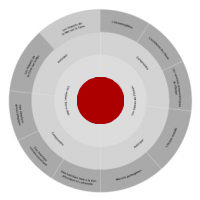The Uberization of society refers to the transformation of traditional economic models into a new model that enables direct and instantaneous contact between customers and service providers (whether companies or individuals) via digital platforms.
What we have here is “a rapid shift in the balance of power thanks to digital technology”. This is “a new economic model tied to the digital economy”, a competitor that “can swiftly threaten and challenge an old model of the traditional economy”.
The business model of outsourcing platforms rests on four pillars:
- extensive outsourcing of production to independent producers, where the platform simply coordinates and acts as a trusted third party;
- an advantageous balance of power for the platform, due to the large number of independent producers;
- large-scale deployment using digital technologies;
- interchangeability between producers and consumers, as producers can also be private individuals.
Uberization platforms have emerged as a result of ubiquitous internet, smartphone penetration, changing urban lifestyles and a growing demand for new sources of income, made easier by self-employed status.
Uberization has already transformed a number of business sectors, including transport (Uber, Blablacar), hotels (Airbnb, Booking), catering (Deliveroo, Glovo), book publishing and distribution (Amazon Publishing).
Uber, the ride-hailing company, for example, is now present in nearly 70 countries worldwide, generating a net income of over $37 billion in 2023.
The challenges of uberization are diverse, prompting social and economic debates on workers’ rights, social protection, platform regulation and the exacerbation of inequality in the digital age.
With the rise of the digital economy in Morocco, uberization expands in a variety of sectors, including transport, catering, real estate and the medical field, and spills over into other areas. The current tax framework, however, raises several questions, especially in light of the far-reaching implications of these activities on employment, labor relations and people’s quality of life. It would therefore be pertinent to update the legal and regulatory frameworks governing the employment market and social protection, to bring them into line with these new working methods.

